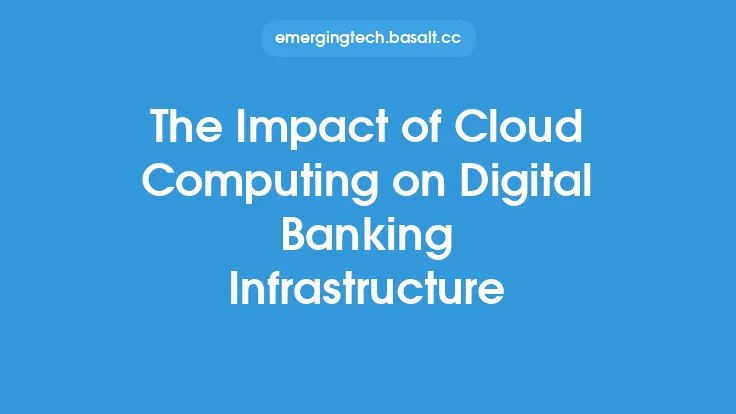In today's digital age, the banking sector has undergone a significant transformation with the advent of digital banking. Digital banking has made it possible for customers to access banking services remotely, using digital channels such as online banking, mobile banking, and social media. However, the adoption of digital banking is not uniform across all segments of the population. One of the key factors that determine the adoption of digital banking is digital literacy. Digital literacy refers to the ability of individuals to use digital technologies, such as computers, smartphones, and the internet, to access and manage information.
What is Digital Literacy?
Digital literacy is a broad term that encompasses a range of skills, including basic computer skills, online navigation, and the ability to use digital tools to access and manage information. In the context of digital banking, digital literacy refers to the ability of individuals to use digital channels to access banking services, such as online banking, mobile banking, and digital payment systems. Digital literacy is essential for individuals to fully utilize the benefits of digital banking, including convenience, speed, and cost savings.
The Importance of Digital Literacy in Digital Banking Adoption
Digital literacy plays a critical role in the adoption of digital banking. Individuals with high levels of digital literacy are more likely to adopt digital banking services, as they are able to navigate digital channels with ease and confidence. On the other hand, individuals with low levels of digital literacy may struggle to use digital banking services, which can lead to frustration and abandonment. Digital literacy is essential for individuals to understand the benefits and risks of digital banking, including online security, data protection, and fraud prevention.
Benefits of Digital Literacy in Digital Banking
There are several benefits of digital literacy in digital banking, including:
- Convenience: Digital literacy enables individuals to access banking services remotely, using digital channels such as online banking and mobile banking.
- Speed: Digital literacy enables individuals to conduct banking transactions quickly and efficiently, using digital tools such as online payment systems and mobile wallets.
- Cost savings: Digital literacy enables individuals to reduce banking costs, such as transaction fees and branch visit costs.
- Improved financial management: Digital literacy enables individuals to manage their finances more effectively, using digital tools such as budgeting apps and financial analytics.
Challenges of Digital Literacy in Digital Banking
Despite the benefits of digital literacy in digital banking, there are several challenges that individuals may face, including:
- Lack of access to digital technologies: Some individuals may not have access to digital technologies, such as computers or smartphones, which can limit their ability to use digital banking services.
- Limited digital skills: Some individuals may have limited digital skills, which can make it difficult for them to navigate digital channels and use digital banking services.
- Online security concerns: Some individuals may be concerned about online security, including data protection and fraud prevention, which can limit their adoption of digital banking services.
- Language barriers: Some individuals may face language barriers, which can make it difficult for them to use digital banking services.
Strategies for Improving Digital Literacy in Digital Banking
There are several strategies that can be used to improve digital literacy in digital banking, including:
- Education and training: Banks and financial institutions can provide education and training programs to help individuals develop digital literacy skills.
- Simplified user interfaces: Banks and financial institutions can design simplified user interfaces that are easy to navigate, even for individuals with limited digital skills.
- Multilingual support: Banks and financial institutions can provide multilingual support to help individuals who face language barriers.
- Online security measures: Banks and financial institutions can implement online security measures, such as two-factor authentication and encryption, to protect individuals' data and prevent fraud.
Conclusion
In conclusion, digital literacy is a critical factor in the adoption of digital banking. Individuals with high levels of digital literacy are more likely to adopt digital banking services, as they are able to navigate digital channels with ease and confidence. Banks and financial institutions can play a critical role in improving digital literacy, by providing education and training programs, designing simplified user interfaces, and implementing online security measures. By improving digital literacy, individuals can fully utilize the benefits of digital banking, including convenience, speed, and cost savings. As the banking sector continues to evolve, it is essential that individuals have the digital literacy skills necessary to navigate the digital landscape and access banking services remotely.





